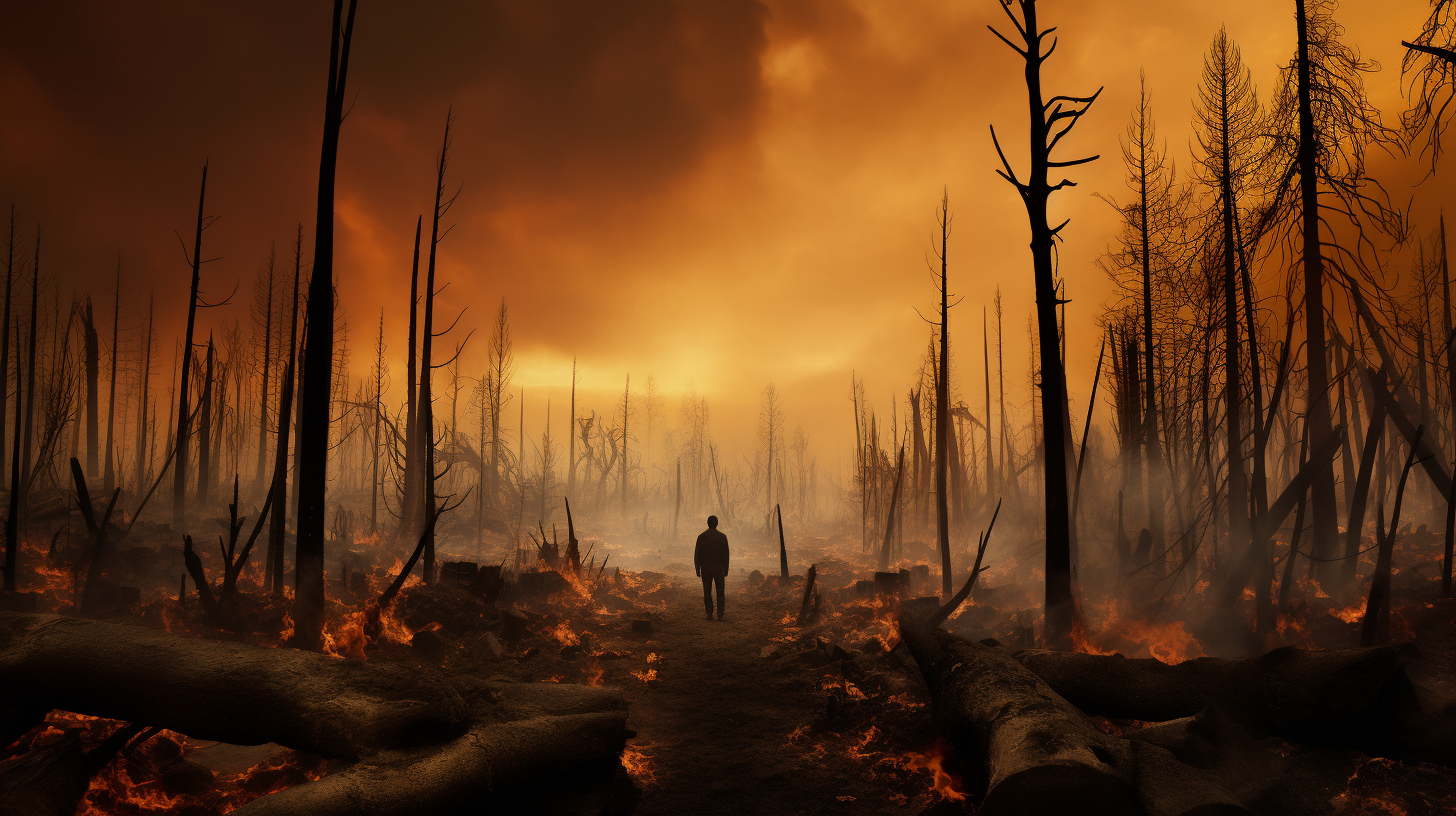Once lush with verdant splendor, the hinterlands that span our world have now draped themselves in searing amber – a disheartening canvas of flames characteristic of our era. In this solemn narrative of the Anthropocene, it’s the ruthless forest fires that have crowned themselves the perennial sovereigns over vast ecosystems, laying waste to what were once thriving biodiverses.
As if taking a leaf from the mythical Phoenix, forests ignite in a cyclical, paradoxical rebirth of destruction, yet fail to rise anew from their ashes. The once sporadic wildfires have escalated into a persistent phenomenon, so much so that they’ve been inked into the annals of the present-day climate dystopia.
We witness flamboyant infernos each year with an almost ritualistic regularity, their orange fingers clawing at the skies – a macabre dance of annihilation that has not only escalated in frequency but in ferocity. They surge with a sort of autonomy; a demonic hunger that swallows whole forests, towns, and the hopes of a reprieve from our incendiary fate.
Amidst the embers, we cling to accounts by those brave souls who once battled against nature’s heated breath. Their recollections stitched into our environmental tapestry, adding depth to this harrowing epoch. “You never forget your first ‘firenado,'” recounts one such firefighter. “It’s the roar that stays with you, like the earth itself has opened its maw to wail – a sound matched only by the stories of old, of dragons and their fury.”
But, what are the deeper implications of this fiery dominion? Scientists opine that the increased incidences of wildfires contribute to a broader climatic upheaval. Air quality dips to hazardous levels, sending a smoky SOS that often goes unanswered in the corridors of power. The carbon dioxide released is a bitter jest; a climactic boomerang that heightens global temperatures and fortifies the cycle of dryness and fire.
With each season, wildlands are transmuted; they become desolate charcoals of their former selves. A phenomenon that silently stands testament to our planet’s dire trajectory. Catastrophism no longer lies in the realm of speculation but stares back at us with a fiery gaze, reminding all of a once-verdant Eden now lost.
Some suggest that in the ashes lies potential; a fertile ground for innovation and human ingenuity. Ideas of combating wildfires are abundant, yet the white noise of bureaucracy often drowns them out. Mechanisms to prevent, detect, and respond to these fires are suggested, yet the draw of apathy seems a more accessible quarry to most decision-makers.
No article would be complete without the mention of the ecological casualties – the biodiversity that gets snuffed out with each sweep of flame. It’s a relentless offensive with no truce in sight, a continuous evisceration of wildlife habitats. The sorrow and stoicism of the surviving fauna are near palpable as they traverse what once was a sanctuary, now a smoldering necropolis.
It’s a battle narrative of our own making, carved into the world not with swords but with flames, choices, and deafening silence to the clarion calls for change. As we peer through the smoke and the tears, the world appears a chiaroscuro – darkened by loss and fleeting glimpses of what we had.
The future might hold tales of recovery and awakening or perhaps the mere echo of the fire’s bygone rule. Yet, in the present dystopic chronicle of our making, we waver on how our story will be told by those who stand amidst the remnants of the flames simply as fleeting narrators of their relentless reign.
